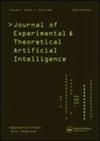基于块的图像检索伪相关反馈
IF 1.7
4区 计算机科学
Q3 COMPUTER SCIENCE, ARTIFICIAL INTELLIGENCE
Journal of Experimental & Theoretical Artificial Intelligence
Pub Date : 2021-06-10
DOI:10.1080/0952813X.2021.1938695
引用次数: 0
摘要
伪相关反馈(PRF)是一种将检索到的前k张图像作为相关反馈的信息检索相关反馈技术。PRF被用来避免传统射频方法的局限性,即人在环过程。伪相关反馈集虽然含有噪声,但PRF仍能合理有效地进行检索。为了实现PRF, Rocchio算法被认为是相当有效的,并且是一种成熟的基线方法。然而,它只是简单地将所有前k个反馈图像视为与查询相同。因此,我们提出了一种基于块的PRF方法来提高图像检索性能。该方法将正反馈集和负反馈集中的图像进一步划分为预定义的块,每个块包含一到几张图像,并且对排名较高或较低的图像块分别赋予较高或较低的权重。使用NUS-WIDE-LITE和Caltech 256数据集和两种不同特征表示的实验一致表明,使用30个块的方法在P@10, P@20和P@50方面优于基线PRF。此外,我们表明,一个包含用户反馈的系统允许基于30块的PRF方法执行得更好。本文章由计算机程序翻译,如有差异,请以英文原文为准。
Block-based pseudo-relevance feedback for image retrieval
ABSTRACT Pseudo-relevance feedback (PRF) is a relevance feedback (RF) technique for information retrieval that treats the top k retrieved images as relevance feedback. PRF is used to avoid the limitations of the traditional RF approach, which is a human-in-the-loop process. Although the pseudo-relevance feedback set contains noise, PRF can perform retrieval reasonably effectively. For implementing PRF, the Rocchio algorithm has been considered reasonably effective and is a well-established baseline method. However, it simply treats all of the top k feedback images as being equally similar to the query. Therefore, we present a block-based PRF approach for improving image retrieval performance. In this approach, images in the positive and negative feedback sets are further divided into predefined blocks, each of which contains one to several images, and blocks containing higher- or lower-ranked images will be assigned higher or lower weights, respectively. Experiments using the NUS-WIDE-LITE and Caltech 256 datasets and two different feature representations consistently show that the proposed approach using 30 blocks outperforms the baseline PRF in terms of P@10, P@20, and P@50. Furthermore, we show that a system that incorporates the user’s feedback allows the 30-block-based PRF approach to perform even better.
求助全文
通过发布文献求助,成功后即可免费获取论文全文。
去求助
来源期刊
CiteScore
6.10
自引率
4.50%
发文量
89
审稿时长
>12 weeks
期刊介绍:
Journal of Experimental & Theoretical Artificial Intelligence (JETAI) is a world leading journal dedicated to publishing high quality, rigorously reviewed, original papers in artificial intelligence (AI) research.
The journal features work in all subfields of AI research and accepts both theoretical and applied research. Topics covered include, but are not limited to, the following:
• cognitive science
• games
• learning
• knowledge representation
• memory and neural system modelling
• perception
• problem-solving

 求助内容:
求助内容: 应助结果提醒方式:
应助结果提醒方式:


